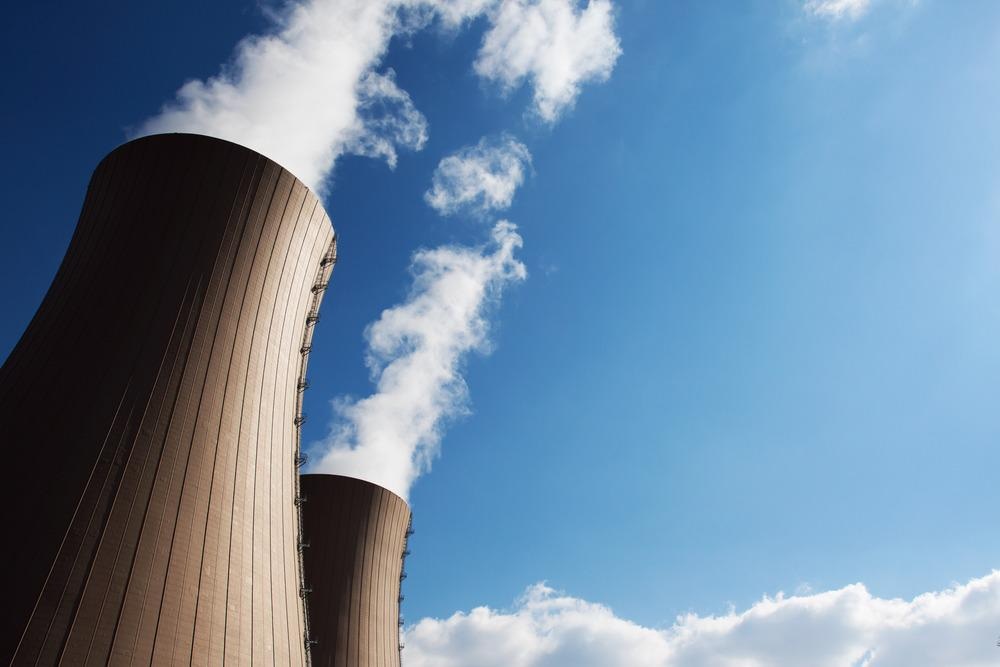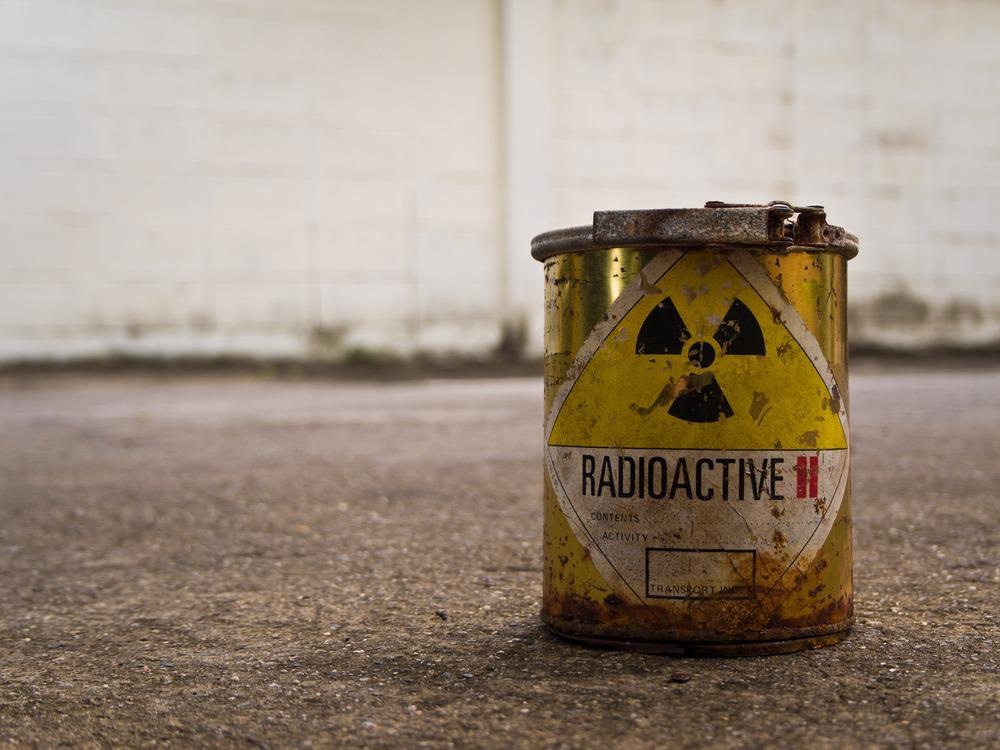While new nuclear power facilities will be built in the UK in the upcoming decades, nuclear power is a big part of our transition to sustainable energy. A significant problem that has long been faced in the industry is radioactive waste hazardous to humans and the environment. Will nuclear waste continue to be an environmental hazard or an environmental promise?

Image Credit: Wlad74/Shutterstock.com
Nuclear power describes the use of nuclear reactions to create electricity. This results from the processes of nuclear fission and nuclear decay. Within nuclear power plants, most electricity from nuclear power results from the nuclear fission (splitting) of uranium and plutonium atoms. Low-enriched uranium fuel is used to produce electricity in the nuclear reactor.
The UK’s electricity needs derive from about 7 Gigawatts (GW) of nuclear sources. There are currently eight operational nuclear plants, supplying j18.7 percent of the total electricity supply in 2018. Most nuclear plants will be retired by the end of the decade to be superseded by a new generation of nuclear plants. The government currently plans for there to be a nuclear capacity of 24 GW by 2050 to provide approximately a quarter of the country’s electricity requirements.
Nuclear Power Safety a Key Concern
Nuclear power is a relatively clean way of boiling water to make steam, which turns turbines to produce electricity, without the harmful by-products emitted by fossil fuels. This means it is a zero-emission clean energy source. While considered cleaner than fossil fuel production in terms of greenhouse gas emissions, there is an environmental concern around nuclear power due to the radioactive wastes produced, such as graphite, used reactor fuel, and uranium mill tailings. These wastes are radioactive and a hazard to humans for thousands of years.
It needs to be solid and resistant to leaching or leaking out of any associated storage when handling the waste. Once stored, methods of coping with the waste have involved compaction and incineration, since the combustible elements of radioactive wastes can be incinerated, reducing their volume. This has not overcome the waste’s hazards, as the radioactivity of the waste would remain, and become more concentrated as the volume is reduced.
Conditioning processes convert radioactive waste into a state suitable for managing, whether transporting, storing or disposing of the fuel. Two approaches are cementation and vitrification to make the waste into a stable, solid, insoluble form.
The immobilized waste (classified as Low Level Waste) would be packed into metal drums or boxes, preventing contamination of the surrounding environment. In the past decades, since 1959, the majority of the UK’s Low Level Waste has been disposed at the Low Level Waste Repository in Cumbria. Initially, the waste was stored in landfill-like trenches but is now stored in metal containers before being held in vaults.
New Waste Management Methods Show Promise For the Future
Dealing with radioactive graphite waste has been one of the main challenges for nuclear power worldwide. Over 300,000 tons of nuclear graphite waste and about 100,000 tons in the UK have been awaiting disposal in a Geological Disposal Facility yet to be built.
Recent innovations offer ways of monitoring and dealing with nuclear waste. In October 2021, the University of Manchester announced the news of a novel graphite treatment that could alleviate the UK’s nuclear waste burden.

Image Credit: Satakorn/Shutterstock.com
As shown in their study published in Energy & Environmental Science, the team of scientists discovered a way of removing radioactivity from the waste and downgrading it from being ‘higher activity waste’ to a lower level that is easier to handle. Their approach uses electrolysis to convert it into a molten salt substance from which it is easier to remove nuclear graphite isotopes. This decontamination technique could seriously speed up the disposal process, making it much easier and more economical to dispose of.
In a press release published by the University of Manchester, Prof. Abbie Jones, Chair in Nuclear Graphite, said: "The UK nuclear industry has built all but one of its reactors (>40 in total) using graphite as core moderator material and structural components. As these facilities cease to operate, this will result in a volume of graphite waste equivalent to ~ 1300 double decker buses (~ 100,000 tonnes). As most of the advanced modular nuclear reactor technologies proposed for future low carbon energy production may also use nuclear graphite, technologies that can minimise the burden of this waste are vital.”
If we are successful in industrialising this technology, it could lead to up to £1 billion in savings for the UK taxpayer by reducing disposal costs for current graphite legacy wastes, as well as improved sustainability of advanced reactor technology where graphite will be deployed again.
Dr. Clint Sharrad, Reader in Nuclear Decommissioning Engineering
The combination of nuclear power with renewables is a winning strategy for the green transition. The major hurdle to making nuclear power truly green has been the problem of radioactive waste, but newly emerging research shows hope for a future where sites can safely manage and dispose of radioactive waste.
References and Further Reading
European Commission declares nuclear and gas to be green [Online]. DW. Available at: https://www.dw.com/en/european-commission-declares-nuclear-and-gas-to-be-green/a-60614990 (Accessed 20 April 2022.)
Nuclear Power in the United Kingdom [Online]. World Nuclear. Available at: https://world-nuclear.org/information-library/country-profiles/countries-t-z/united-kingdom.aspx (Accessed 20 April 2022.)
How do we handle radioactive waste? UK Inventory. Available at: https://ukinventory.nda.gov.uk/about-radioactive-waste/how-do-we-manage-radioactive-waste/ (Accessed 20 April 2022.)
Tatiana Grebennikova, Abbie N. Jones and Clint A. Sharrad. Electrochemical decontamination of irradiated nuclear graphite from corrosion and fission products using molten salt (2021). Energy & Environmental Science. Issue 10, 2021. Available at: https://pubs.rsc.org/en/content/articlelanding/2021/ee/d1ee00332a
Novel graphite treatment 'could reduce UK nuclear waste burden'. University of Manchester. Available at: https://www.manchester.ac.uk/discover/news/novel-treatment-technology-could-reduce-uk-nuclear-waste-burden/ (Accessed 20 April 2022.)
Disclaimer: The views expressed here are those of the author expressed in their private capacity and do not necessarily represent the views of AZoM.com Limited T/A AZoNetwork the owner and operator of this website. This disclaimer forms part of the Terms and conditions of use of this website.